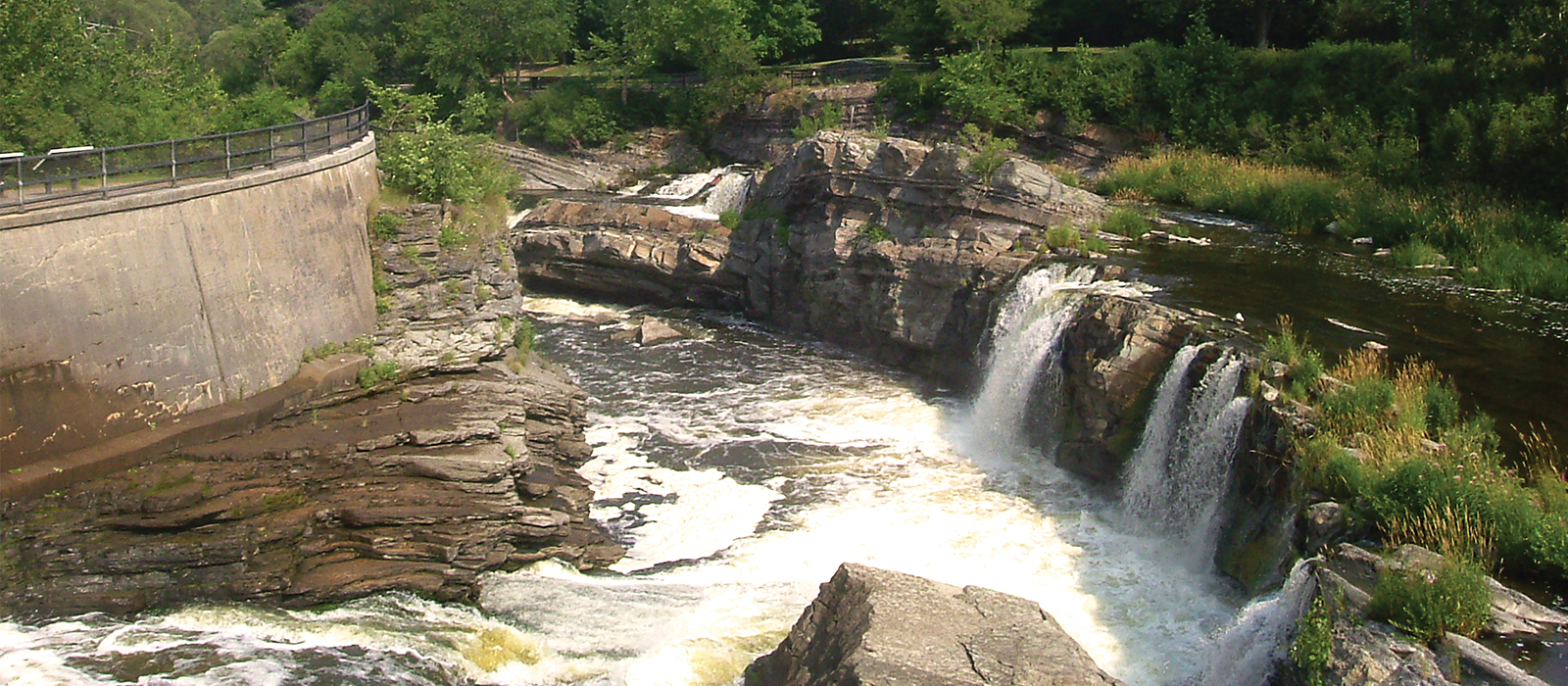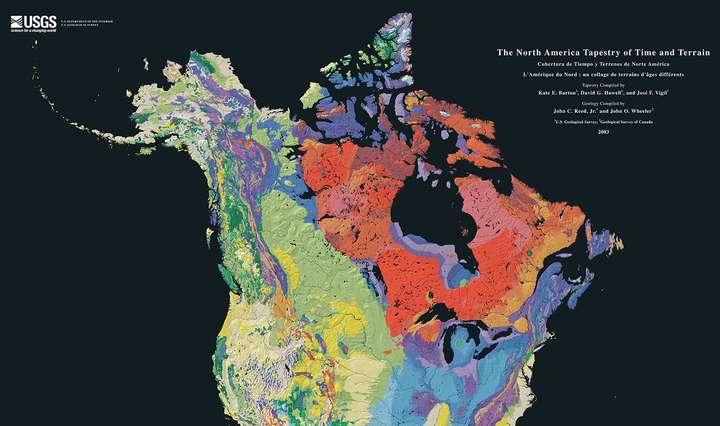
About Geoheritage
What is Geoheritage?
The word geoheritage is a short form of the phrase geological heritage, and is meant to refer to what Western science calls the abiotic, or non-living aspects of our natural environment that provide significant evidence of the processes and events in Earth history that have shaped our landscape, and which deserve our recognition and appreciation.
Digne Declaration: the Declaration of the Rights of the Memory of the Earth, was the first statement to recognize the value and importance of geological heritage and was signed by attendees at The First International Symposium on the Conservation of our Geological Heritage, held at Digne de la Baine, France in 1991. The Declaration recognizes the uniqueness of Planet Earth, understanding that it represents the only bond that unites all humankind, and that its history cannot be separated from our own.
North American Tapestry of Time and Terrain map
Geoheritage in Canada
Canada’s physical topology and landscape features are vast, varied and visually breathtaking. The geological features and the processes that created them, and that support a multitude of environmental niches and ecosystems should be recognized and valued by Canadians. We believe that they are. They are just not universally refered to as heritage in Canada.
Canada’s heritage framework includes multiple national and provincial agencies that oversee various parts of the heritage portfolio, and while natural heritage is represented especially within Parks Canada, geology is rarely specifically designated within statements of Heritage Value. In practice, this translates to a lack of awareness and few opportunities for education about the connection between Geoheritage and ourselves. This is not a uniquely Canadian problem. There exists a noteworthy gap in recognition of heritage sites of geological significance world-wide. In 2020, of the total 1121 sites on the United Nations World Heritage List, 213 are designated by natural heritage criteria, and only 98, or 11% by virtue of their geology (https://whc.unesco.org/en/list/). Additionally, those that do exist do not represent the full breadth of geological periods, geological process or key localities illustrating the history of geology, including the geological time scale global references, known as GSSP's (Global Boundary Stratotype Sections and Points) for geologic periods and faunal stages. In short, there remains an imbalance in representation of the geodiversity on Earth.

The Friends of Canadian Geoheritage
The Friends of Canadian Geoheritage is a grassroots movement, begun by Dr. Alan J. Donaldson in 2003 and formed to address this problem; to promote recognition and preservation of Canada’s geological heritage. It invited individual Canadians to engage with all levels of government to encourage the recognition, designation and preservation of sites of geological significance in Canada, which if destroyed would be lost forever.
Ottawa-Gatineau Geoheritage Project (OGGP)
A local offshoot to the Friends of Canadian Geoheritage movement, the Ottawa-Gatineau Geoheritage Project was born soon after. It now boasts many successes in recognizing, protecting and promoting the geological heritage of the National Capital region, including the rescue of biological features in Cambrian aged sandstones destined for destruction in highway expansion.
The goals of the geoheritage project are:
- PRESERVATION of world-class geoheritage sites, by minimizing the loss of irreplaceable geological and surface landform features of the Ottawa-Gatineau region through insightful land-use planning
- PROTECTION of geoheritage sites by strengthening and enforcing applicable laws to help preserve significant records of Earth history
- PROMOTION OF PUBLIC AWARENESS through the production of informative signs, brochures and guidebooks for geoheritage sites
These objectives involve the stewardship of local natural features and education of people living in the region. Provision of greater geoheritage recognition will add another dimension to the interesting heritage stories of the area for residents and tourists alike.
October 2021, Carleton University Science Cafe talk by Beth McLarty Halfkenny, Geoheritage of the National Capital Region; What's here and why care?
Learn More:
- Geodiversity: A New Paradigm for Valuing and Conserving Geoheritage. Murray Gray, Geoscience Canada, 35(2), 2008
https://journals.lib.unb.ca/index.php/GC/article/view/11084 - Examples of Geoeducation, Geoconservation and Geo-rescue Projects in Ontario. John Alan Donaldson, Geoscience Canada, 36(3), 2009
https://www.erudit.org/en/journals/geocan/2009-v36-n3-geocan36_3/geocan36_3ser01.pdf - Geoscience and Canada: Understanding our Earth: The vital role of Canada's geoscientists. Geoscientists Canada and Canadian Federation of Earth Sciences, 2018
https://www.cgenarchive.org/uploads/2/5/2/6/25269392/geoscience-and-canada-1.pdf - Geodiversity, geoheritage and geoconservation for society, M. Gray, 2019, International Journal of Geoheritage and Parks, 7(4)
https://www.sciencedirect.com/science/article/pii/S2577444119300565 - Geoheritage and Geoconservation – History, Definition, Scope and Scale, Brocx, M., and Semeniuk, V., 2007 Journal of the Royal Society of Western Australia, 90(2) 53‐87
https://www.researchgate.net/publication/285012358_Geoheritage_and_geoconservation_-_History_definition_scope_and_scale
Definitions
Heritage: what has been inherited from the past
Geology: the study of the Earth, its processes and history, including the history of life, especially as recorded in the rock record.
Geoheritage: features of geology, at all scales that are intrinsically or culturally important sites offering information or insights into the evolution of the Earth, into the history of science, or that can be used for research, teaching, or reference (Brocx and Semeniuk, 2007)
Geodiversity: the natural range of geological, including rocks, minerals, and fossils, and geomorphological features including land forms, processes, and soil. (Gray 2004)
Geosite: site of geological significance

